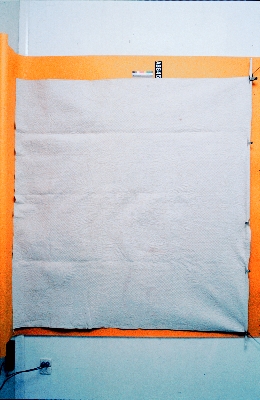Quilt No.754PHM - Powerhouse Museum

2520 x 2430mm
"The maker of the quilt was Hannah Reed, born Coulson. The quilt was made in Hannah's home and the name of the farmlet was 'Swinhope Mill' of Swinhop, Sparty Lea, Allendale, Northumberland, England.
"The quilt was passed down through the family. It was left to the donor's aunt, Phyllis Jane. Then it was passed on to the donor's brother, Thomas William Ritson, next to the mother Ruth Ritson. Ruth brought the quilt to Australia in 1914 and passed it down to Lavinia McFadyen in 1919, just before she died. The quilt was not used, but kept as a treasure and donated to the Powerhouse Museum in 1983." [PHM]
The quilt is used for research and exhibition only.
"Hannah Reed died at the age of 77 in 1892. At that time she was living with her daughter Ruth; her granddaughter Lavinia was 12 years old. On 8 February 1983, Lavinia McFadyen wrote:
'My Grandmother Reed was a thrifty, hardworking lady and was left a widow when Grandpa died at 55 years. I'd say she made and helped make several quilts in her time. She died at 77. When you read the quilting history I'm sending you'll see it was very time consuming. My aunties were all very good needlewomen and my mother taught needlework at a girl's school until she married and I had a beautiful display of quilts and much fancy work at my 2 sales. I gave a lot away until friends asked me to sell it.' "
[Lavinia McFadyen for the Powerhouse Museum]

Related Quilts:
It is padded with hand carded wool.
1950 x 1935mm
1550 x 1321mm
2235 x 1854mm
1920 x 1756mm






